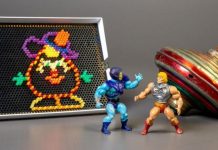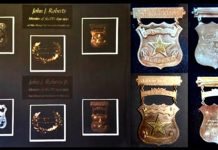
Feb. 13 (UPI) — Rep. Sam Johnson donated the tin cup and toothpaste tube he used during the seven years he spent as a prisoner of war in Vietnam to the Smithsonian’s National Museum of American History on Tuesday.
During the donation ceremony, the Republican from Texas thanked the museum for preserving POW stories.
“As Americans, we have so much to be thankful for, including the gift of freedom,” Johnson said. “As any service member or military family can tell you, that price can be heavy. So let us remember that cost — and remember those who pay it first.
“In light of the 45th anniversary of Operation Homecoming, I would like to share a quote that was etched on the wall by a fellow captive. It read, ‘Freedom has a taste to those who fight and almost die that the protected will never know.’ God bless you, and God bless America. I salute you.”
Johnson wrote in his autobiography, Captive Warriors: A Vietnam POW’s Story, that his tin drinking cup held special significance.
“The only souvenir I wanted from North Vietnam was my drinking cup. For me, it symbolized our war of resistance for seven long years. It had been a means of communication and, as such, a means of survival. It was all I wanted to take home from Hanoi’s prison system. I vowed I’d find a way,” he wrote.
The “Price of Freedom: Americans at War” exhibit at the museum includes Johnson’s donation in addition to another of other prisoner artifacts, including striped uniforms and toiletries.
“Artifacts such as a simple cup and a tube of toothpaste bear witness to the human suffering and the strength and endurance of American patriots,” said Jennifer Jones, chair of the museum’s Division of Armed Forces History.
Johnson served 29 years in the Air Force, a number of those as a fighter pilot. He was captured in North Vietnam on April 16, 1966, when his jet was shot down. He and a group of other POWs were known as the Alcatraz gang — they were kept separate from other prisoners because of their resistance to their captors.
At a facility the American prisoners dubbed Alcatraz, the men were kept in leg cuffs in windowless, concrete solitary cells with the lights on 24 hours a day.
Johnson said he was kept in solitary confinement for 42 months.
He was released with nearly 600 other prisoners on February 12, 1973, as part of Operation Homecoming.
Johnson is the recipient of two Silver Stars, three Legion of Merit awards, the Distinguished Flying Cross, the Bronze Star Medal, two Purple Hearts, four Air Medals and the Prisoner of War Medal. He retired as a colonel.






